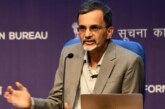About one third of Maharashtra, especially western Maharashtra, Marathwada, and parts of northern Maharashtra and Vidarbha, are in the grip of severe drought, which is attributed to the uneven distribution of rainfall in 2011 and 2012. The drinking water in these drought-hit areas is being supplied through tankers.
Media reports indicate absence of official mechanism to check the quality of this water but it is likely that it won’t be much different to the tanker water used in several Mumbai buildings for non-potable purposes. And there is no guarantee that even this water will be available till mid-June this year when the monsoon is expected to start. Shortage of funds is cited as main reason for incompletion of drinking-water supply schemes in several towns and villages of the state.

The water problem causes enormous daily hardship to women. This water scarcity, coupled with poor sanitation facilities, culminates into three kinds of health problems: ‘water wash’ ailments like conjunctivitis, caused by contact with poor quality water; diseases like dengue caused by water stagnation; and waterborne diseases like diarrhoea, which is the leading cause of infant deaths.

Shortage of water directly impacts livelihoods. Reports indicate a large number of small farmers and farm labourers are migrating to major cities in search of employment as no means of livelihood are available in their native places. Bulk of Maharashtra’s population suffers from severe and chronic water scarcity, despite the fact that it is one of India’s most developed states. The problem is not generally experienced or even realised in cities like Mumbai and Pune, however, as one moves away from these privileged areas, women walking or standing in queue to collect water is a common sight across the state.
Water is either not available within 500 metres or is not available 15 metres below the ground in approximately70% of the state’s villages (around 27,600 villages). According to some reorts, around a fourth of the state’s rural households do not have secure access to drinking water, and nearly half the rural households in the state do not get safe drinking water.

It is revealed from household surveys conducted for World Bank projects that average time spent in collecting water by rural households in Maharashtra is two hours a day; using ‘opportunity cost’ principles that translates to Rs 12 per household per day. During summer, the time and cost increases as sources dry up. Every year the state government spends around Rs 100 crore on supplying water on an emergency basis to severely water-starved villages.
Undoubtedly, Maharashtra is among India’s most urbanised states, around 60% of its population still resides in rural areas. Viewed in a broad spectrum, urbanisation is heavily skewed towards the Mumbai region. In western Maharashtra and Vidarbha, around three-fourths of the population lives in rural areas; in Marathwada, 85% of the population is rural.
Thus, agriculture constitutes the main source of livelihood in the state. While it accounts for roughly 55% of overall employment in the state, in rural areas, 80% of the population is dependent on agriculture, either as cultivators (42%) or labourers (38%).
Drought is a recurring phenomenon in areas encompassing parts of western Maharashtra, much of Marathwada, and parts of Vidarbha, and extending to southern Madhya Pradesh and Gujarat and northern Karnataka. Every year, some or the other part of this region is affected by severe water scarcity. According to one report, scarcity-affected villages over a 20-year period (between 1960 and 1982) show that the number of villages affected in a year varies from around 600 to over 14,000, out of a total of around 40,000 villages. In the historic 1972-73 drought, nearly 30,000 villages were affected.
Further, severe drought is experienced over large parts of the state every three to four years. Most recently, drought affected 11 districts of the state from 2000 onwards; in 2003-04, 71 talukas were declared to be affected by ‘severe drought’
The precarious situation afflicting Maharashtra calls for unanimous action, keeping aside differences and petty politics and to do something that could provide relief to the drought-affected people. However, political forces, in the wake of Lok Sabha and assembly election scheduled to be held in 2014, entail the potential of using the opportunity to score over each other.
Apart from organising aid for drought-affected areas, efforts should be made to ensure that the hundreds of crores of rupees of taxpayers’ money earmarked for drought-relief work would be utilised honestly. There are hardly any checks on the money being spent on supply of water through tankers — how many trips each tanker makes on paper and what actually happens on ground? How many works are supposed to be taken up for providing employment to the poor in drought-affected areas remain only on paper yet funds spent for the same? How much money is siphoned off in the name of cattle camps and whether the cattle left by farmers are actually given enough fodder and water?
Drought like grim situation needs to be addressed by a long-term drought mitigation policy. Immediate priorities warranting attention inter alia include ascertaining the multi-faced impacts of drought, mobilising government relief, and the long-term vision of eradicating drought. Undoubtedly the adverse impact of climate change in terms of meteorological drought, characterised by low rainfall, is an unalterable reality, nevertheless, there is ample scope for minimising the impact of meteorological drought by building up capacity of the people.
If replication of Maharashtra-like drought situation in other parts of the coutry is to be averted, equitable and rational use of water and appropriate agriculture practices have to become the main item on the agenda of national and state policy. Such a policy should encompass various innovative and bold measures, which can only be implemented with people’s involvement with the help of civil society. However, government’s cold-shouldered response to civil society involvement in water sector is helping ‘vested interests’ at the expense of the people.



